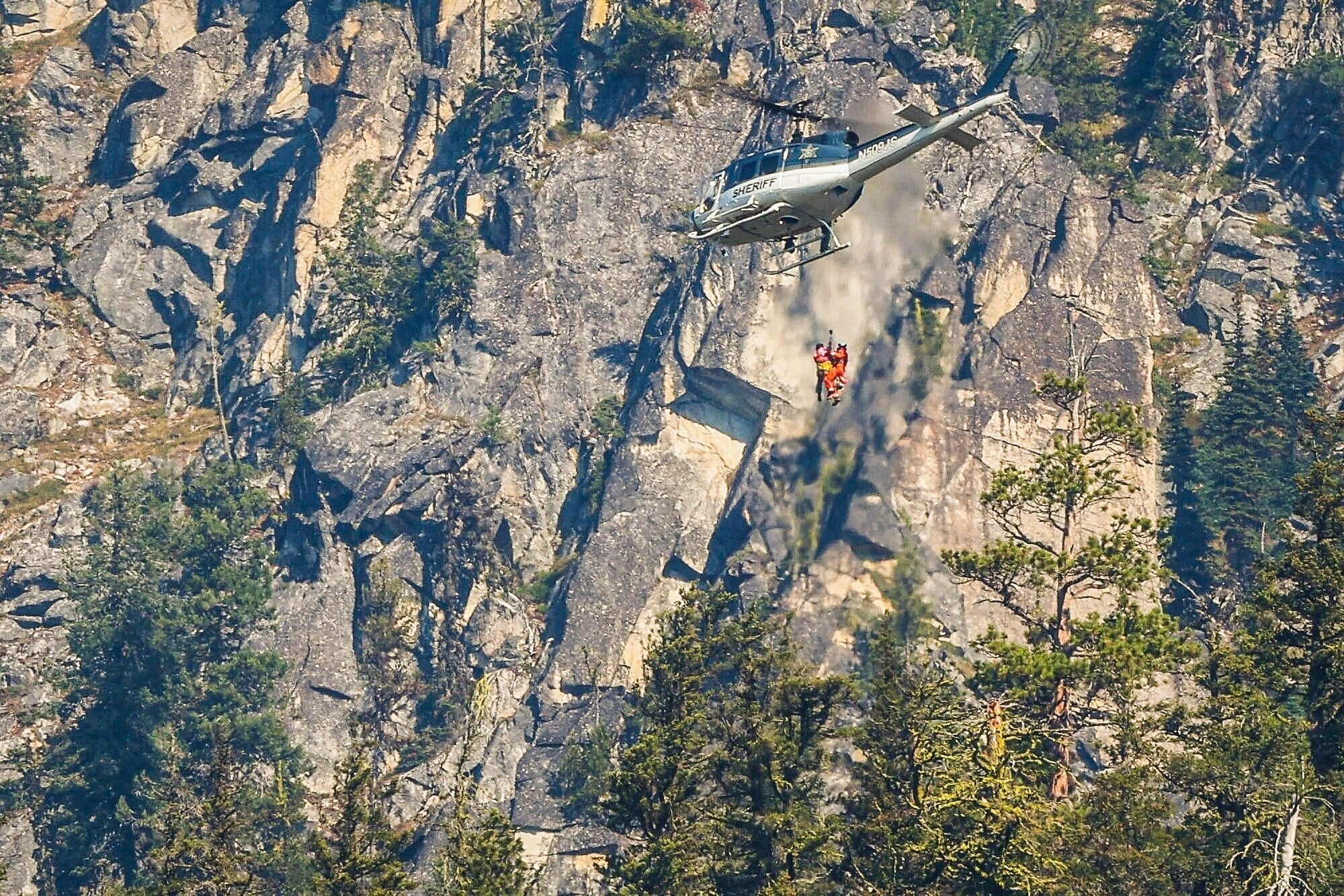The search for murder suspect Travis Decker ended on a remote Washington state mountainside, but the mystery of how he died may never be solved.
Nearly four months after the 32-year-old U.S. Army veteran allegedly murdered his three young daughters at a campsite and vanished into the Cascade wilderness, investigators finally found what was left of him: scattered bones, a shirt, a bracelet, and chewing tobacco on Grindstone Mountain, less than a mile from the crime scene.
DNA confirmed the remains were his – but the discovery brought no answers about his final moments.
Chelan County Coroner Wayne Harris told KIRO Newsradio this week that details about his death will likely never be known.
“It is impossible to determine how murder suspect and fugitive, Travis Decker, died or when,” Harris said.

Decker had been accused of kidnapping and killing his daughters – 9-year-old Paityn, 8-year-old Evelyn, and 5-year-old Olivia – whose slain bodies were found at the Rock Island Campground on June 2.
The tragic killings occured after Decker had been granted a court-approved visit with his daughters. When he failed to return them to their mother, she reported the girls missing, triggering a frantic search. She told law enforcement previously that Decker’s mental health issues had worsened and that he had become increasingly unstable.
His disappearance launched an intensive manhunt that stretched through the summer and into early fall. That search ended September 18, when a team came across the partial remains at 4,200 feet elevation. Bones were scattered across five different locations.
“There were a few leg bones, a couple of arm bones, some vertebrae, some ribs, and a foot, and they were scattered in about five different locations, at an elevation of about 4200 feet,” Harris said. “Unless another hiker finds a cranium and the forensic anthropologist can examine it and determine that he may have fallen, or if there is a bullet hole in his skull.”
Decker’s skull and torso are still missing, making it impossible to rule out suicide, a fall, or another cause. Without soft tissue, toxicology testing is also off the table, according to Harris.

Speculation about Decker’s death has swirled since investigators found bloody handprints on his truck at the original crime scene. Some wondered if he had been attacked by his own dog, which was later rescued and taken to a shelter. But Harris said the anthropologist found no evidence of fractures or bite marks.
“The anthropologist did look at the few bones he had, and he could not see any fractures in them, didn’t see any animal activity, like any teeth marks in the bones,” Harris explained.
The search that finally uncovered Decker’s remains was guided by Washington State Patrol forensic psychologist Dr. Stacy Cecchet, who identified Grindstone Mountain as a likely location.
Chelan County Sheriff Mike Morrison said at a press conference that Decker may have fled up the mountain within hours of killing his daughters.
“Based off the information we have, it appears that the potential of him going directly up Grindstone Mountain shortly after the event or within that day would be pretty consistent,” he said. He also said Decker appeared to have been injured after the murders.
“He succumbed to those injuries, whatever those injuries were,” Morrison said. “We’re going to hear back from our coroner’s office if they are able to get a cause of death or a time of death.”
But Harris now says there’s no way to determine whether Decker suffered any injuries that led to his death.
“Not without any further bone parts that we can look at, no, we have no idea,” he added.

While the discovery of Decker’s remains has officially closed the case, questions still loom about how he died on the mountain and what happened in his final hours.
“The greatest hope is now the Decker family and the community can begin to heal,” Harris said.
